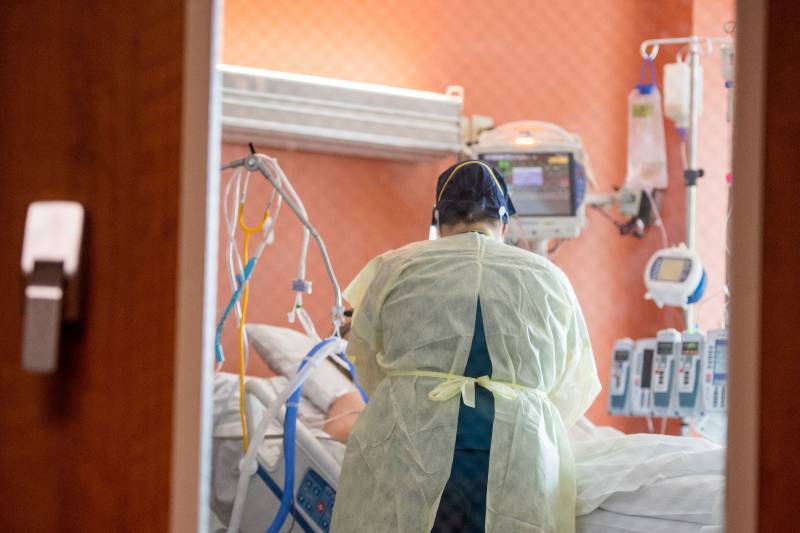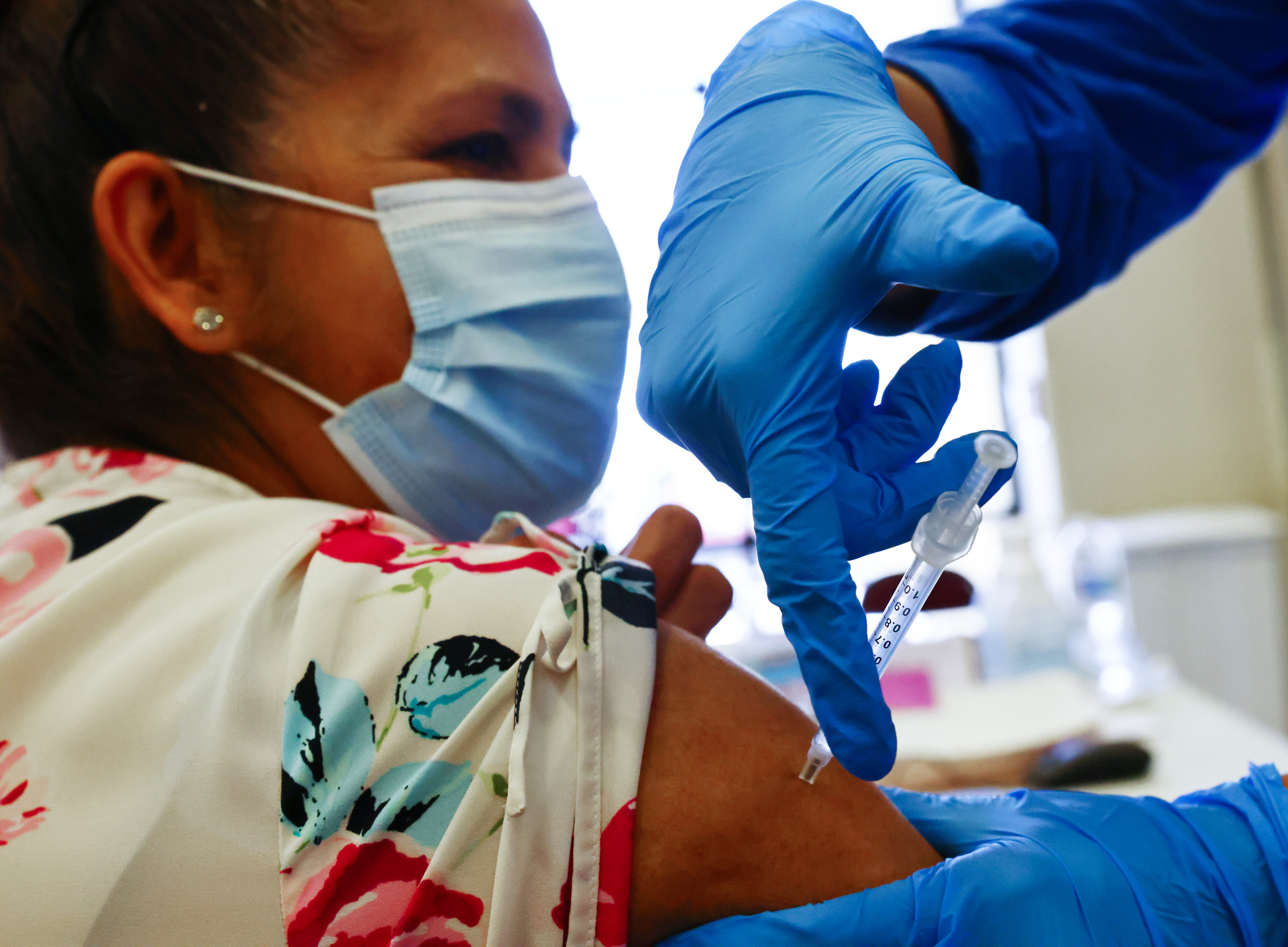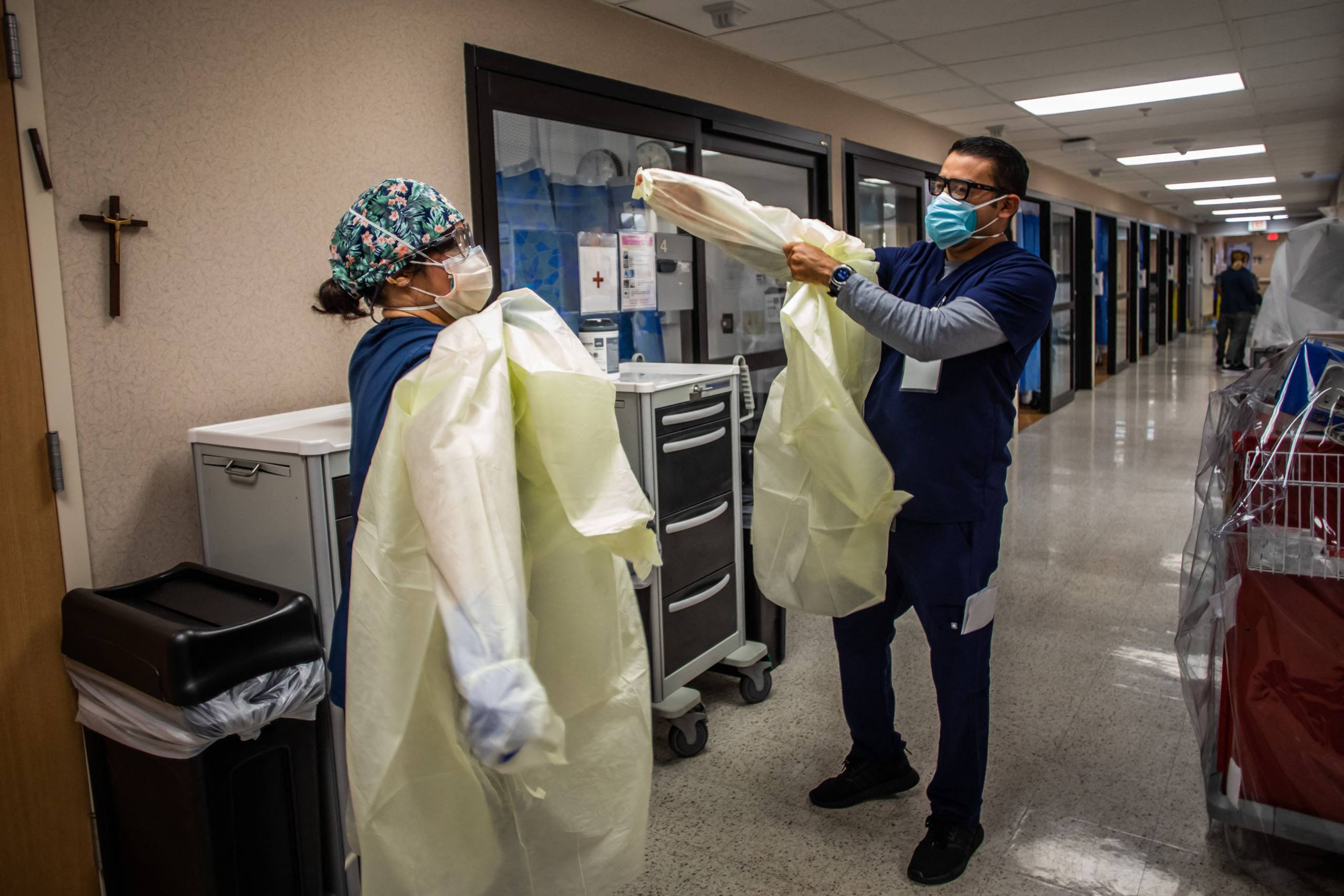Overall the state as a whole is now doing better than a year ago, before vaccines were available. But a closer look at each county shows that “better” isn’t the case for all: At least 18 counties have more hospitalized COVID-19 patients today than they did this time last year. Another five have just as many.
The vast majority of the ones faring worse are in the Central Valley and rural Northern California, which are still recovering from bad summer surges. Humboldt, Madera and Lassen counties have the biggest year-over-year increases. In Madera, the 7-day average stood at 32 hospitalized patients on Sunday, compared to 13 a year ago. Humboldt had 11 hospitalizations on Sunday compared to three on the same date last year.
It’s a different — and far better — situation in California’s urban counties. Of the state’s 10 most populous counties, all except Fresno have fewer COVID patients in the hospital today than a year ago.
Los Angeles, Alameda and Contra Costa counties are reporting less than half of the COVID-19 hospitalizations of last year. San Diego, Orange, Riverside, Santa Clara, San Bernardino and Sacramento counties have about 30% less.
Last year’s winter surge was harsh for most of the state. But for some counties — including Butte, Humboldt, Mendocino, Shasta and Placer — this summer and fall were even worse. Some saw more patients hospitalized in summer and fall than they did last winter.
In the Central Valley some local hospitals are still strained. And experts say that’s a dangerous situation going into the holidays when another wave of cases is expected.



